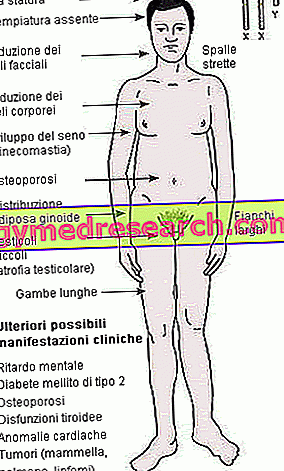What is the Gallinella
Disambiguation
Gallinella is a term used to refer to different foods.
- The fish of the Triglidae family, genus Chelidonichthys, a species of lucerna, is called the gallinella .
- Water birds are wild birds belonging to the Rallidae family, Genus Gallinula, species chloropus .
- In Tuscany the guinea fowl is also called gallinella (Family Numididae, Genus Numida, specie meleagris ).
- For chanterelles, gallucci or finferli, but sometimes also gallinelle, we mean the mushrooms of the genus Cantharellus, a cibarius species.
In the following article we will deal specifically with the sea gull.
What is the sea gull?

The sea gull feeds on invertebrates and is predated by large fish and marine mammals. It has a fairly characteristic shape; the large head resembles that of a bird. The body, brownish on the back and clear on the belly, is tapered and tightens on the tail.
Primarily equipped with small fins, the sea hen has two large and showy pectoral membranes (which open wide to confuse predators) and tiny limbs, similar to paws, which it uses to move on the bottom.
The gurnard is of excellent food value, especially in the context of soups and oven cooking; it is therefore taken and marketed throughout the coast of the Italian peninsula (it is also the subject of amateur fishing). It cannot be kept.
The sea hen also has excellent nutritional properties; containing proteins of high biological value, specific vitamins and minerals, it is a worthy exponent of the "fishery products" (1st fundamental food group).
Nutritional Properties
Nutritional characteristics of the gurnard
The sea hen is a food that belongs to the fundamental group of foods; in particular, it is part of all fishery products.
Being a lean fish (about 90 kcal / 100 g) it has a low energy supply, supplied mainly by proteins (> 18 g / 100 g), followed by small doses of lipids <2 g / 100 g), without any significant trace of carbohydrates .
Peptides have a high biological value, ie they contain all the essential amino acids necessary to structure human proteins, while fatty acids are predominantly unsaturated - polyunsaturated, with an excellent percentage of omega 3 (eicosapentaenoic - EPA - docosahexaenoic - DHA).

The vitamin profile is remarkable; excellent percentages of water-soluble B-group molecules (thiamine B1, niacin PP, cobalamin B12, etc.) and vitamin D can be inferred. As regards the saline aspect, phosphorus, potassium, calcium, iron and iodine levels are excellent.
The sea hen lends itself to any nutritional regime. It is particularly indicated for food therapy against overweight and metabolic disorders. This is because, in addition to being a low-calorie food, it contains proteins with remarkably satiating power. Moreover it abounds in omega 3 polyunsaturated fatty acids EPA and DHA, excellent allies in the fight against: dyslipidemia, especially hypertriglyceridemia, hypertension and metabolic disorders of various kinds (including type 2 diabetes mellitus).
It has no contraindications in celiac disease and lactose intolerance; as anticipated, if storage is not optimal it can be annoying for those suffering from histamine intolerance. It is not suitable for vegetarian and vegan food.
The average portion of gurnard is 150 g (about 135 kcal).
Kitchen
Culinary use of the sea gurnard
The sea gurnard can be used to make seafood appetizers, first and second courses. You can cook whole or filleted. The most common methods are: boiling (drowning in water, steaming, also by pressure), short stewing (in soup), in a pan with acquapazza, frying, roast in the oven.
It is necessary to keep in mind that the chicken, due to its thinness, tends to become stringy if cooked too dry. Some ingredients that often accompany this fish are: tomato, aromatic herbs (marjoram, oregano, basil, sage, etc.), olives, capers, other Mediterranean ingredients and seafood.
The filleting residues can be used to make an excellent broth. The first ones stuffed with gurnard or sautéed with the same are excellent, as are the various marinades (gurnard seared in vinegar or lemon) to be consumed cold.
The food pairing wine of the hen varies according to the recipe; for example the one with acquapazza, for example, lends itself: Alto Adige Müller Thurgau, Greco di Tufo and Ischia bianco.
Description
Description of the sea gurnard
The sea hen has an important head and a characteristic shape. The snout protrudes in a similar way to the beak of a duck and has a "typically straight and flat forehead".
The color is spotted sand (or brown or reddish) on the back, pink on the sides and very clear on the belly; outside the water, the hen appears between the brownish and the reddish. The body is tapered and gradually tightens from the head to the tail.
The fins are almost all of modest size; the dorsal one is pointed. The obvious lateral line is delineated by small hard and protruding teeth. The fins, on the whole, are not particularly developed.
On the gill operculum it has a small thorn for passive defensive use. Under the opening the two main morphological features appear:
- Two large bluish oval membranes, with a dark spot near the insertion and edged with electric blue, radiated as if they were additional pectoral fins, normally kept closed or open only to confuse predators
- Two series (3 + 3) of tiny paws, which he uses to walk around the bottom without swimming.
The sea hen can reach 70 cm in length and about 6 kg in weight.
Biology
Classification of the owl fish
The "Italian" sea gurnard is a fish belonging to the Triglidae Family, Genus Chelidonichthys and Lucerna species. There are other species similar to that of our local sea hen, widespread also in the rest of the world, such as C. cuculus, the C. kumu, the C. lastoviza etc. It is interesting to note that the Triglidae Family is NOT the same as the mullet, instead due to the name Mullidae (or mullidae). Moreover, although resembling the owl fish (Family Dactylopteridae, Genus Dactylopterus and species volitans ), which also has two lateral fins similar to round wings bordered of blue, the "kinship" between the hen and the latter stops at the biological Suborder Dactylopteroidei.
Distribution and Habitat of the sea hen
Our local sea hen ( C. lucerna ) is a bony fish that colonizes the entire basin of the Mediterranean Sea and the eastern side, from Ireland to Morocco, of the Atlantic Ocean. Lives on sandy bottoms and / or muddy depths varying from a few meters to over 200; the largest specimens rarely remain stationary at depths less than 20 m.
Moorhen in the food chain
It feeds mainly on the nocturnal hours of invertebrates such as, for example, small crustaceans (shrimps, small scampi, crabs and shrimp) and worms (such as the sandstone, the Korean, the tremolina, eunice etc.). It is hunted mainly by large fish and marine mammals, such as tuna, alletterati, verdesche, fox sharks, rays and dolphins.
Fishing
Sea hen fishing
Currently, the gallinule is not classified as an endangered species. It is fished professionally with various methods, such as trawling, gillnets, longline and various fixed lines. In the amateur field, on the other hand, it is a habitual prey of the bolentino technique (with hand or canine line) or surf casting. It is not a common subject of withdrawal by apnea fishermen.



